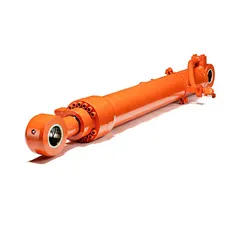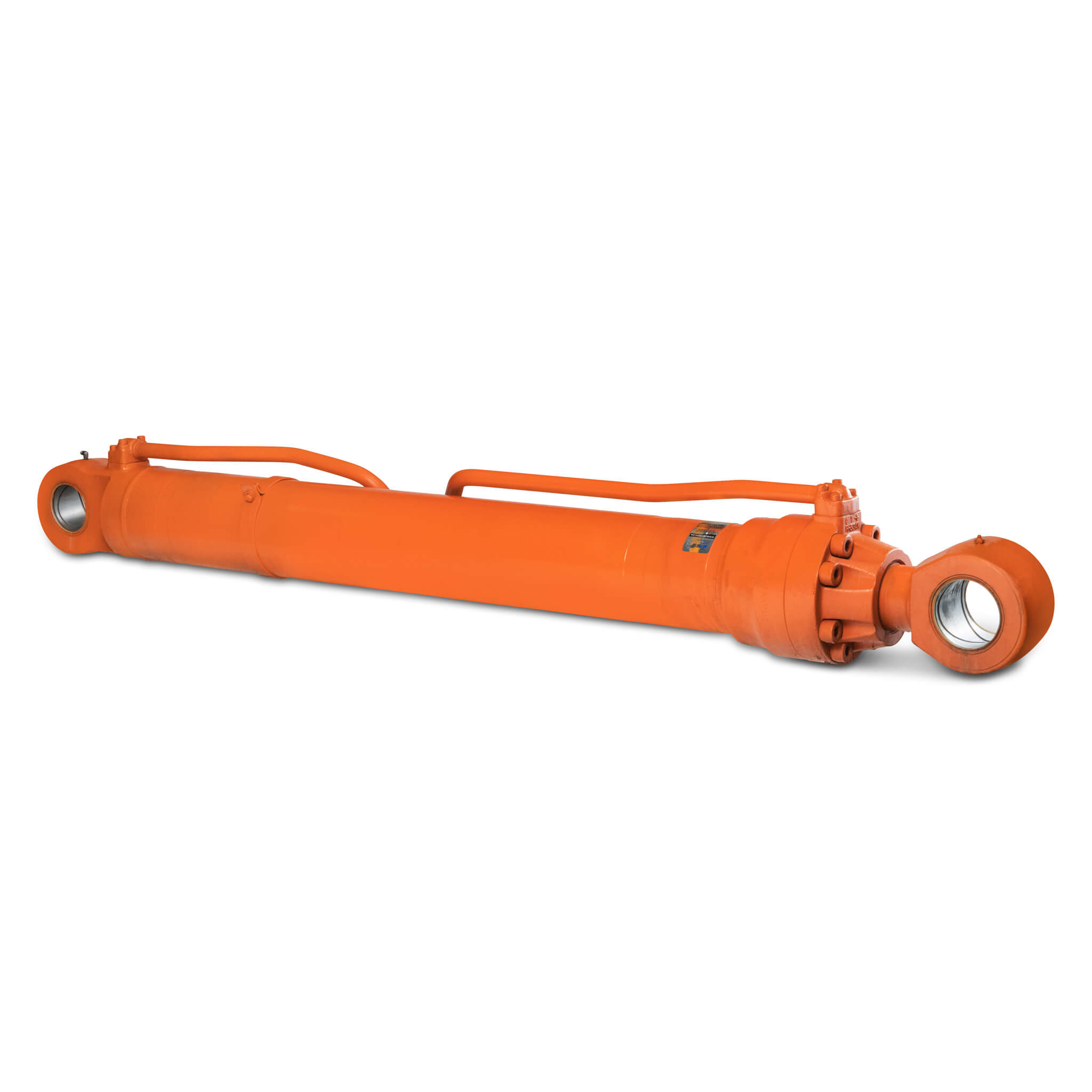Product Description
| Product Name | CAT hydraulic boom/arm/bucket oil cylinder for sale | ||
| Material | stainless steel | ||
| Application | construction industry machinery | ||
Shipping and Packing:
| Shipping Mode: | By air, by sea ,by express (DHL,Fedex, ,etc.) |
| Standard Shipping Time: | By air within 5-6 days. By DHL: within 4-5days.by sea about 1 month |
| Standard Packing: | Carton or wooden case |
| Special Packing: | We can discuss and support you. |
General Order Process:
*Step1: Contact us by online, Email , ,WhatsApp
*Step2: We discuss prices, lead time, payment terms, shipping mode, packing.
*Step3: Issuing PI for you and you confirm .
*Step4: Arrange payment
*Step5: Delivery
*Step6: Goods reach you.
*Step7: After-sale service special for you.
All kinds of excavator parts we can supply as follow:
1 Hydraulic parts: hydraulic pump, main valve, hydraulic cylinder, final drive, travel motor, swing motor etc.
2 Engine parts: engine ass’y, piston, piston ring, cylinder block, cylinder head, crankshaft, turbocharger,
fuel injection pump, starting motor and alternator etc.
3 Undercarriage part: Track roller, Carrier roller, Track Link, Track shoe, Sprocket, Idler and Idler cushion etc.
| After-sales Service: | Warranty |
|---|---|
| Warranty: | 6 Months |
| Type: | Excavator Bucket |
| Application: | Excavator |
| Certification: | ISO9001: 2000 |
| Condition: | New |
| Customization: |
Available
|
|
|---|

How does a boom cylinder handle variations in environmental conditions?
A boom cylinder is designed to handle variations in environmental conditions effectively. Here’s a detailed explanation:
Environmental conditions can vary significantly in different work environments where heavy equipment operates. Boom cylinders are constructed to withstand these variations and continue to function reliably. Here are some ways in which boom cylinders handle variations in environmental conditions:
- Sealing and Protection: Boom cylinders are equipped with seals and protective measures to prevent the intrusion of contaminants, such as dust, dirt, water, or debris. The seals help maintain the integrity of the hydraulic system and protect internal components from damage caused by environmental factors. Additionally, protective coatings or treatments are often applied to the cylinder’s exterior to enhance its resistance to corrosion and wear.
- Temperature Resistance: Boom cylinders are designed to operate within a wide temperature range. They are constructed using materials that can withstand both high and low temperatures without compromising performance. Specialized seals and hydraulic fluids are utilized to maintain proper functionality and prevent damage, even in extreme temperature conditions.
- Fluid Compatibility: Hydraulic fluids used in boom cylinders are carefully selected to ensure compatibility with the anticipated environmental conditions. Factors such as temperature, humidity, and chemical exposure are taken into account when choosing the appropriate hydraulic fluid. The selected fluid should have the necessary viscosity and additives to provide optimal lubrication, prevent foaming, and resist degradation under the specific environmental conditions.
- Corrosion Resistance: Boom cylinders are often exposed to environments that may contain corrosive elements, such as saltwater, chemicals, or acidic substances. To handle these conditions, cylinders are manufactured using materials that exhibit high corrosion resistance. Protective coatings, such as chrome plating or specialized paint, can be applied to further enhance the cylinder’s ability to withstand corrosive environments.
- Regular Maintenance: Proper and regular maintenance is essential to keep boom cylinders in optimal condition and mitigate the effects of environmental variations. This includes inspections, cleaning, lubrication, and seal replacements as needed. By following manufacturer-recommended maintenance schedules and procedures, operators can address potential issues early on and ensure the longevity and reliability of the boom cylinders.
By incorporating sealing and protection mechanisms, temperature resistance, fluid compatibility, corrosion resistance, and regular maintenance practices, boom cylinders are designed to handle variations in environmental conditions. These features enable them to operate effectively and maintain their performance in diverse work environments, including construction sites, mining operations, forestry applications, and more.
It’s important to consult the equipment manufacturer’s guidelines and recommendations for specific environmental considerations and maintenance practices related to boom cylinders. This will help ensure the proper functioning and longevity of the cylinders in various operating conditions.

How does a boom cylinder contribute to load distribution and control?
A boom cylinder plays a significant role in load distribution and control. Here’s a detailed explanation:
In various applications such as construction equipment, material handling machinery, and mobile cranes, boom cylinders are responsible for supporting and controlling the load. They help distribute the load forces and provide precise control over the movement of the boom or arm. Here’s how a boom cylinder contributes to load distribution and control:
- Load Support: Boom cylinders are designed to withstand and support the loads encountered during operation. They are typically mounted between the machine’s main body and the boom structure, providing a connection that carries the weight and forces of the load. The cylinder’s robust construction and load-bearing capacity ensure that the load is evenly distributed and properly supported.
- Force Generation: Boom cylinders generate the required force to control the movement of the boom or arm. By extending or retracting, the cylinder exerts force on the boom, allowing it to lift, lower, swing, or articulate as needed. The cylinder’s ability to generate and regulate force ensures precise load control, contributing to safe and efficient operation.
- Load Stabilization: Boom cylinders help stabilize the load during lifting or movement. By resisting undesired movements or vibrations, the cylinder assists in maintaining the load’s stability and preventing excessive swinging, tilting, or shifting. The controlled movement provided by the cylinder helps minimize the risk of load damage or accidents, ensuring safer and more controlled operations.
- Balance and Alignment: Boom cylinders aid in achieving balance and alignment of the load. By controlling the extension or retraction of the boom, they allow operators to adjust the position of the load relative to the machine’s center of gravity. This balancing capability helps optimize stability, prevent tipping, and enable precise positioning of the load.
- Controlled Speed: Boom cylinders enable precise control over the speed of load movement. By regulating the extension or retraction speed, the cylinder allows operators to adjust the lifting or lowering speed according to the requirements of the task. This controlled speed enhances load handling precision, minimizes impact forces, and improves overall safety.
The use of a boom cylinder in load distribution and control offers several benefits:
- Enhanced Safety: Boom cylinders contribute to load stabilization, balance, and controlled movement, reducing the risk of load accidents or instability.
- Precise Load Handling: The force generation and controlled speed provided by boom cylinders enable operators to handle loads with precision, ensuring accurate placement and minimizing the potential for damage.
- Improved Efficiency: Boom cylinders facilitate efficient load distribution and control, enhancing productivity and reducing the time required to complete tasks.
- Load Capacity Optimization: By supporting and distributing the load forces, boom cylinders help optimize the machine’s load capacity and performance.
Overall, a boom cylinder is a crucial component in load distribution and control. It provides load support, generates force, stabilizes the load, aids in balance and alignment, and enables controlled speed. These features contribute to safe, precise, and efficient load handling in various applications.
It’s important to follow the manufacturer’s guidelines and recommendations regarding the selection, installation, and maintenance of boom cylinders to ensure their proper functioning and optimal load control.

What are the key components and features of a boom cylinder?
A boom cylinder consists of several key components and features that enable its functionality and performance in heavy machinery. Here’s a detailed explanation:
- Cylinder Barrel: The cylinder barrel is the main body of the boom cylinder, typically made of high-strength steel. It houses the piston, seals, and other internal components. The cylinder barrel is designed to withstand high pressure and provide structural integrity to the cylinder.
- Piston: The piston is a cylindrical component that moves back and forth inside the cylinder barrel. It is usually made of durable materials and acts as a barrier between the two chambers of the cylinder. The piston divides the cylinder into a rod side and a cap side, allowing hydraulic fluid to act on one side or the other to create the desired motion.
- Rod: The rod is a solid metal shaft attached to the piston and extending outside the cylinder barrel. It transmits the force generated by the hydraulic fluid to the boom or other connected components. The rod is designed to withstand tensile and compressive forces and is often coated or treated to resist corrosion and wear.
- Seals: Seals are essential components that prevent hydraulic fluid leakage and maintain the integrity of the cylinder. They are positioned between the piston, rod, and cylinder barrel to create a tight seal. Common types of seals used in boom cylinders include piston seals, rod seals, and wiper seals.
- Ports and Fittings: Boom cylinders have ports and fittings that allow the connection of hydraulic hoses or pipes to supply hydraulic fluid. These ports enable the controlled flow of hydraulic fluid into and out of the cylinder, creating the necessary pressure for boom movement.
- Mounting Brackets: Mounting brackets are used to attach the boom cylinder to the heavy machinery’s frame or structure. They provide stability and support, ensuring proper alignment and secure installation of the cylinder.
- Internal Cushions: Some boom cylinders feature internal cushions or shock absorbers. These cushions help dampen the impact and reduce vibrations during the extension or retraction of the boom. Internal cushions improve the smoothness of boom movement, enhance operator comfort, and reduce stress on the cylinder and other components.
- Corrosion Protection: Boom cylinders are often coated or treated with corrosion-resistant materials to withstand harsh environmental conditions. These protective measures help extend the cylinder’s lifespan and maintain its performance over time.
- Load Capacity and Pressure Rating: Boom cylinders are designed with specific load capacities and pressure ratings to handle the heavy loads and pressures involved in heavy machinery operations. The load capacity and pressure rating determine the cylinder’s strength and suitability for different applications.
In summary, the key components and features of a boom cylinder include the cylinder barrel, piston, rod, seals, ports and fittings, mounting brackets, internal cushions, corrosion protection, load capacity, and pressure rating. These components and features work together to enable the controlled extension, retraction, lifting, and lowering of the boom in heavy machinery, ensuring efficient and reliable operation.


editor by CX 2023-11-17